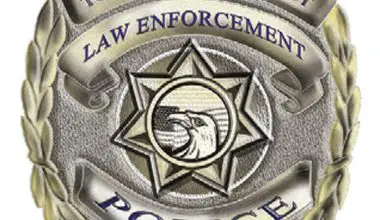AS a firearms instructor, it never ceases to amaze me how few officers carry a backup gun. On average, in my organization, only one in four officers actually carries a backup. When I ask why, I get answers like, “Never needed one” or “This one [referring to their duty weapon] always works.” Here’s my response to that: Every car I have ever owned has a spare tire. It might be a donut spare or a full size, but they all have a spare.
In late 2003, I’d been a cop for three years. I was also serving in the Army as a Reservist. I had just completed a tour in Iraq and was stationed at Fort Bragg in North Carolina. I was demobilized and allowed to return home. So I left for California with my wife and her trusty police dog in tow.
We decided to see the sights along the way: caverns in Tennessee, the famous Route 66, and a Native American reservation in New Mexico. The reservation was pretty far off the beaten path—about 50 miles of rough, rockstrewn “roadway” away from the main road. We were the last people to leave that day. About 25 miles down the road, I got a flat. It was near dusk and there was no one in sight.
We had no food, a little water, and not much else. I started imagining a The Hills Have Eyes scenario, with the mutant flesh eaters getting ready to come out as soon as the sun went down.
I pulled out the spare from under my truck, took off the flat tire and replaced it with the new one. Problem solved. Sorry, cannibals, you’ll have to find someone else’s brains to eat!
The point of the story is this: I didn’t get a flat tire a block from my house or on a busy interstate with roadside repair just a phone call away. It happened at the worst possible time and place.
So it goes with weapons. It will probably never happen, but if your duty weapon fails, are you prepared for it to happen at the worst possible time? What’s your backup plan if your duty weapon goes down during a gunfight?
Guns, like all things mechanical, are doomed to fail. Firing pins break, ejectors fail to eject, magazines malfunction, and so on. Even the best-made weapon is not reliable 100% of the time. Add in the factor that under stress you are more likely to experience operatorinduced malfunctions.
During range qualifications, I’ve seen officers accidentally hit magazine releases, unintentionally dumping fully loaded magazines. I’ve observed stovepipe malfunctions as a result of a weak grip—the kind of grip you might have in a close-quarters fight with a suspect. I’ve even seen a few cops actually drop their handguns by mistake.
If the stress of a range qualification can cause these types of errors, what’s going to happen when you are fighting for your life?
This is even more important when it comes to off-duty carry. For the most part you have no spare, so your off-duty gun is your only defense. But like the backup gun, I know quite a few cops who don’t carry one. Many lock their duty gun in their locker at the end of their shift and go home unarmed. Given the current threat level to law enforcement, this isn’t a wise idea.
What you choose to carry on and off duty are largely personal choices, but you should consider the following: Probably the best backup gun to carry on the street is the same as your duty weapon. But this might not be practical if you carry a large-frame handgun and don’t have anywhere to conceal it. A good alternative is to carry a smallframe version of your duty gun that is of the same caliber and takes the same magazines. Many companies build compact versions of their large-frame counterparts.
Barring that, a backup gun should be the same caliber as the primary. In an extreme situation, if your primary weapon goes down, you can strip rounds from the magazine and load them into your backup. At a minimum, carry something that goes boom. I knew an officer who carried a five-shot .25 auto in a handcuff case. It’s definitely a last resort, but better than nothing.
I believe it’s a good idea to carry the same gun off duty as the backup you carry on the street, so you’re familiar with how the gun operates. In a highstress moment when your fingers turn into thumbs, you can rely on muscle memory to ensure the weapon operates correctly.
My department issue weapon is a .40-caliber Glock 22. My backup weapon on the street is a Glock 27 (also .40). I carry it in the trauma plate pouch in my vest with a 12-round Glock 23 magazine. I set it up for reverse (weak hand) draw. In a worst-case scenario if my strong-side arm is injured, I can still access my backup with either hand.
My primary off-duty weapon is my Glock 27. I carry it in either a Blackhawk CQC holster or CrossBreed inside-thepants rig. I switch out the Glock 23 magazine for a nine-round Glock 27 magazine for a little additional concealment.
When that isn’t practical or my clothing choice (T-shirt/shorts) doesn’t do a good job concealing it, I carry a Ruger LCP .380. This is also a gun I have carried in undercover assignments. In the future, I intend to purchase a Glock 42 or 43 (.380 or 9mm) to maintain my Glock continuity.
This isn’t a commercial for Glock. If I carried a Springfield XD on duty, I’d opt for a small-frame Springfield as a backup/off-duty gun as well.
When it comes to backup and offduty guns, don’t get caught flat.



